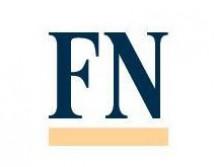
Interest grows in 'democratic' exchange-traded funds
Exchange-traded funds have been one of the most useful financial innovations developed in the past 25 years.
Last year, assets increased by 23%, with net inflows of $245.4 billion pushing total assets under management in ETFs to a record $ 2.398 trillion invested in 5,090 ETFs, with 10,172 listings, from 218 providers on 60 exchanges. There were also more products, users, exchanges, indices, providers and brokers supporting the ETF ecosystem in 2013.
ETFs are a democratic product, offering a range of exposures to developed, emerging and frontier markets and various asset classes in a transparent, liquid, cost-efficient way. They offer intra-day pricing and trading, tax efficiency (in the US), with a small minimum investment size in a fund structure that attracts institutional investors, financial advisers and retail investors – a universal appeal which is very unusual in the financial industry.
Adoption by new investors has also been strong, and ETFGI analysis found a 92% increase in the number of institutions reporting using one or more ETFs: from 1,752 institutions in 2005 to 3,367 in 2012.
Many investors are discovering the relative benefits of the ETF structure over not only traditional mutual funds, but also hedge funds. The first mutual fund was launched in the US in 1924 – 69 years before the first US ETF in 1993. ETFs have since grown to account for over 7% of global mutual fund industry assets in 2013, up from just under 3% in 2007.
ETFs are also winning investor wallet share relative to hedge funds. The first hedge fund offering a long/short strategy was launched in 1949. According to the recent HFR Global Hedge Fund Industry Report, assets in the global hedge fund industry increased by 16.7% to a record $2.63 trillion invested in 8,190 single managers at the end of 2013, only slightly more than the $2.398 trillion in ETFs.
Hedge funds typically charge a fee of 2% of assets and 20% of the profits, and liquidity is often restricted. Hedge fund performance has also lagged in the past few years. The HFRI Fund Weighted Composite index posted a gain of 9.2% in 2013, the best calendar year performance since 2010. The MSCI World index, by contrast, returned 22.5% over the same period and the S&P 500 32.5%. The positive performance of equity markets in 2013 – 22.55% for MSCI world and 32.5% for the S&P 500 index – investors have been satisfied with index ETF returns and fees.
We expect that traditional ETF asset growth will continue to increase by 20% to 25% over the next few years due to the increase in index investing, the increasing pressure on costs and cost transparency, regulatory changes requiring ETF trades to be reported on exchange and further opening of distribution channels through financial advisers and platforms.
There are a few initiatives that could see ETF assets grow at an even faster rate, such as the adoption of ETFs within defined contribution pension plans, non-transparent active ETFs and the approval of the exchange-traded managed fund concept proposed by Eaton Vance in the US which will be offered to other active asset managers if approved by the SEC.
The potential for absolute growth in index and active ETFs and relative growth when compared to mutual funds and hedge funds means many traditional asset managers are considering if and how they should participate in the ETF industry while existing ETF managers are looking at how they might expand to new jurisdictions globally. The options traditional managers can pursue include:
*Creating products that use existing ETFs as the building blocks for funds
*Forging alliances with an ETF provider to launch new strategies or enter new markets. Recent examples include both MFS Investment Management and GSO Capital Partners, the credit business of private equity firm Blackstone Group, teaming up with State Street Global Advisors in launching ETFs; TCW and Emerging Global Advisors; and Fidelity with BlackRock, while several traditional and alternative fund managers have turned to ETF provider Source.
*Acquiring an ETF provider, like iShares did when it bought Credit Suisse Asset Management’s European ETF business and Claymore’s Canadian concern. In January this year, Warburg Pincus announced it was gaining a majority stake in Source and US asset manager Wisdom Tree said it was buying 75% of leveraged ETF specialist Boost.
*Launching a family of ETFs. It takes the largest commitment of time, money and resources to build an ETF ecosystem such as Fidelity’s family of 10 MSCI US sector ETFs. Franklin Templeton is testing the water with its first fixed-income ETF.
Deborah Fuhr is managing partner at ETFGI.
http://www.efinancialnews.com/story/2014-02-17/interest-grows-in-democratic-etfs
